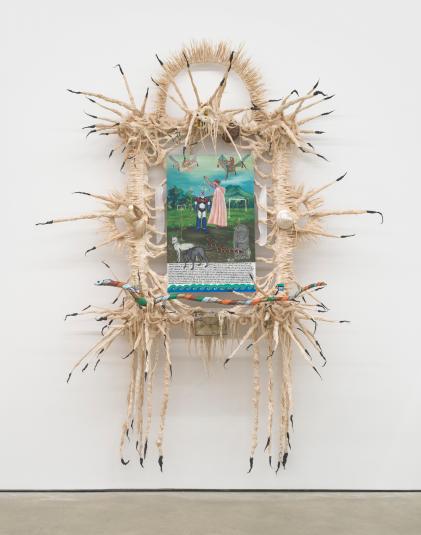-
–
-
Register on

Guadalupe Maravilla, Bless You Magic Flying Woman Retablo, 2022, oil on tin (painting by Alfredo Vilchis), dried gourd, cotton and glue mixture on wood, New Century Fund, Copyright the artist, Courtesy of Guadalupe Maravilla and P•P•O•W, New York
Slow down to explore Guadalupe Maravilla’s January 1984 Retablo and Bless You Magic Flying Woman Retablo. Consider life’s many journeys and if and where you’ve found awe along the way.
During this 90-minute pause from your daily route, we’ll look slowly and mindfully at Guadalupe Maravilla’s retablos. You’ll be invited to look closely, wonder, and share your insights with the group. Together, we’ll learn “awe practices” that you can bring to your everyday life.
The workshop exploring Guadalupe Maravilla’s work will be offered on February 27 at 2:15 p.m. and on February 28 at 10:30 a.m. and 2:15 p.m. We encourage you to register for one workshop on this topic and to join us for future topics as well.
Ages 18 and up. Questions? Email us at talks@nga.gov.
“Finding Awe” is grounded in the National Gallery’s mission to welcome all people to explore and experience art, creativity, and our shared humanity. It offers new “awe practices” drawn from the research of Dacher Keltner, professor of psychology at the University of California-Berkeley, director of The Greater Good Science Center, and author of Awe: The New Science of Everyday Wonder and How It Can Transform Your Life (2023). Research shows that experiences of awe help support mental and physical wellbeing and open us up to greater creativity and deeper empathy.
Image credit: Guadalupe Maravilla, Bless You Magic Flying Woman Retablo, 2022, oil on tin (painting by Alfredo Vilchis), dried gourd, cotton and glue mixture on wood, New Century Fund, Copyright the artist, Courtesy of Guadalupe Maravilla and P•P•O•W, New York
Photograph by JSP Art Photography
You may also like






